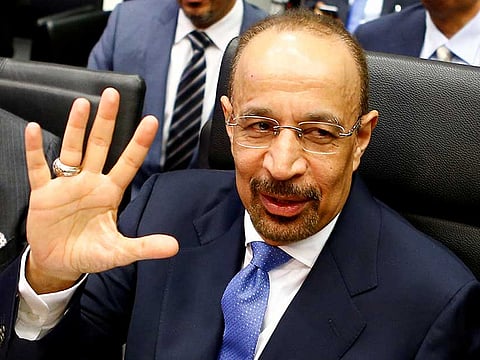Crude oil caps biggest weekly gain since March
‘It’s kind of a perfect storm that has rallied this market, but on the other hand it has nothing to do with fundamentals,’ analyst says

New York: Oil capped its strongest weekly increase in five months after entering a bull market as investors weighed speculation that Opec talks next month could lead to an output freeze, and US inventories dropped.
Futures rose 0.6 per cent in New York. While Opec is unlikely to reach a deal to freeze production, its plans to hold informal talks in Algiers next month “were the spark” behind oil’s rally, according to Morgan Stanley. US crude inventories dropped the most in five weeks through August 12, while fuel stockpiles slid a third week, Energy Information Administration data showed Wednesday.
Oil has climbed more than 20 per cent since it dipped below $40 (Dh147) a barrel earlier in the month, meeting the common definition of a bull market. Russian Energy Minister Alexander Novak said that the nation was open to discussing a freeze after his Saudi counterpart Khalid Al Falih said that informal talks in September may lead to action to stabilise the market. While money managers increased wagers on rising oil prices by the most since January during the week ended August 9, bearish bets on crude remained at record-high levels, according to the Commodity Futures Trading Commission.
“It’s kind of a perfect storm that has rallied this market, but on the other hand it has nothing to do with fundamentals,” said Bob Yawger, director of the futures division at Mizuho Securities USA Inc in New York. “It’s really a short-covering rally that’s been fuelled by Opec rumours.”
West Texas Intermediate for September delivery advanced 30 cents to settle at $48.52 a barrel on the New York Mercantile Exchange. The contract gained 9.1 per cent this week, the most since March. Total volume traded was in line with the 100-day average.
Output freeze
Brent for October settlement slipped 1 cent to close at $50.88 a barrel on the London-based ICE Futures Europe exchange. The contract advanced $1.04 to close at $50.89 on Thursday, also entering a bull market after climbing more than 20 per cent from its early-August low. The global benchmark crude settled at a $1.77 premium to WTI for October.
US oil drillers added 10 rigs this week, extending the biggest and longest increases since April 2014, Baker Hughes Inc data show. Technical analysis shows the relative strength index, or RSI, for WTI is approaching the 70-point threshold that shows prices have risen too quickly. The dollar rebounded after its longest slump since April. A stronger dollar weakens investor appetite for commodities.
“One has to be impressed that the dollar’s recovery is strong and it’s impacting commodities like gold, but oil is fine,” said Phil Flynn, senior market analyst at Price Futures Group in Chicago. “The momentum is still very bullish.”
An agreement to freeze output is within reach as Saudi Arabia, Iran and non-Opec member Russia are producing at, or close to, maximum capacity, Chakib Khelil, former Opec president and Algerian energy minister, said in a Bloomberg Television interview on August 17. Iranian Oil Minister Bijan Namdar Zanganeh hasn’t decided yet whether to participate in the talks in Algiers next month, a spokesman said on August 16. Iran’s refusal to join the April talks in Doha ultimately prompted the Saudis to block a deal.
“After Doha you can never say never, but I think a lot of people see this deal coming through,” said Flynn.
Sign up for the Daily Briefing
Get the latest news and updates straight to your inbox


